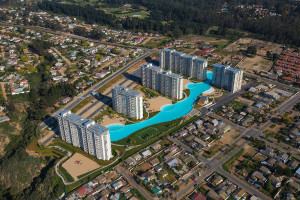As large-scale artificial lakes and lagoons become more prominent, government agencies are struggling with how to enforce their water-quality management.
These bodies of water increasingly appear at large condo and resort complexes. Other specialty recreational applications are appearing more frequently, including surf parks (See “The Surf Park Conundrum,” page 11). In one case a couple years ago, Texas officials prolonged the opening of a park, insisting it be treated like a pool, while owners of the property maintained it was a lake that didn’t require treatment.
The issue gained national attention last year, when 29-year-old Fabrizio Stabile died after allegedly contracting a brain-eating amoeba while surfing at BSR Surf Resort in Waco, Texas.
Currently, no standard water-quality practices seem to specifically name these bodies of water. But at least two states — Florida and Texas — are working to clarify treatment procedures. Florida is updating its state building code to establish standards for lagoons. The Texas Department of State Health Services is fleshing out language for an artificial swimming lagoon code that was mandated by 2017 legislation.
Both are in preliminary stages, still taking comment. They must establish even baseline parameters, including the very definition of a lagoon. In assessing sanitization needs, officials also will look at the role usage plays, says Jennifer Hatfield, director of government affairs with the Pool & Hot Tub Alliance, the association created by the merging of APSP with NSPF. Some lagoons have separate swimming areas, so stakeholders are exploring the possibility of chemically treating certain sections of a lagoon.
The first draft of the Florida code refers to these bodies of water as bathing places, which it defines as measuring at least 2 acres. It would require sanitizing agents and materials such as vinyl liners to meet certain third-party standards. The current language addresses several other aspects not related to water treatment.
In Texas, the draft defines an artificial swimming lagoon as including more than 20,000 square feet of surface area, an artificial liner and method of disinfectant. The current language calls for disinfection with an agent whose residual can be easily monitored, and the use of automatic controllers.
Industry associations are supplying suggested changes, Hatfield said. She doesn’t expect this issue to end with Texas and Florida.
“We are expecting it to spring up in other states,” she said, “which is why we ultimately hope that we can provide a good framework in both these states.”

